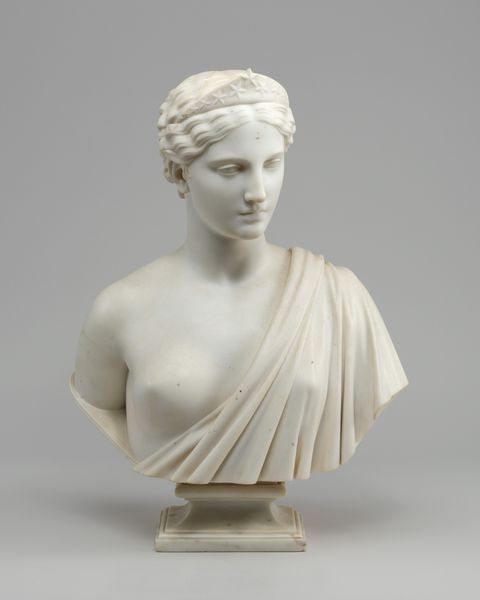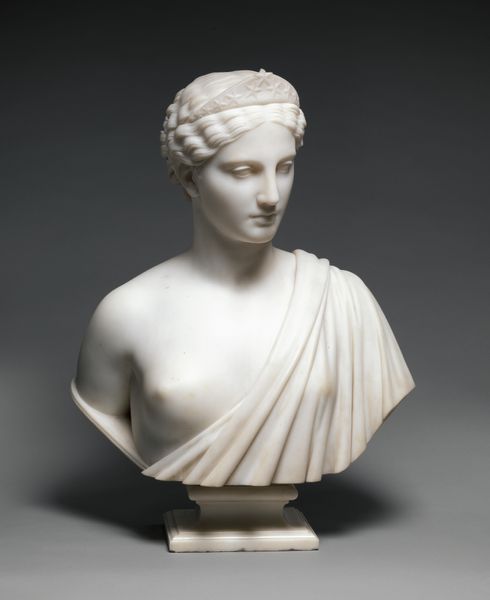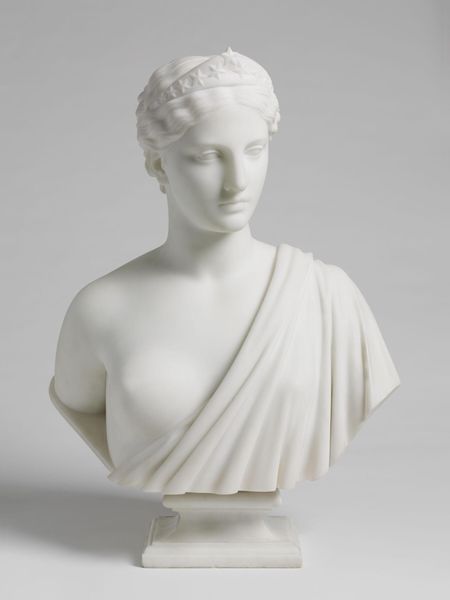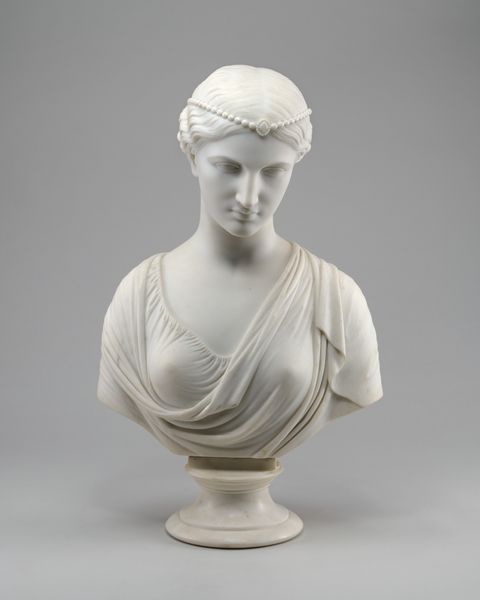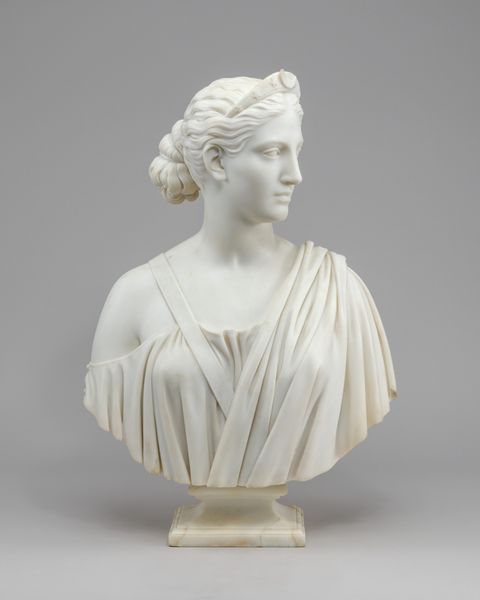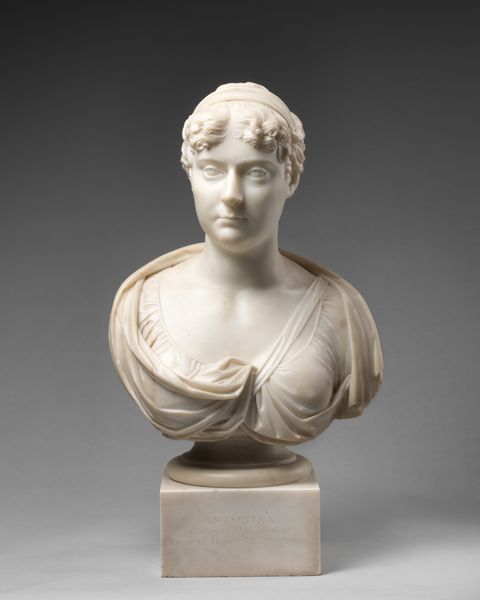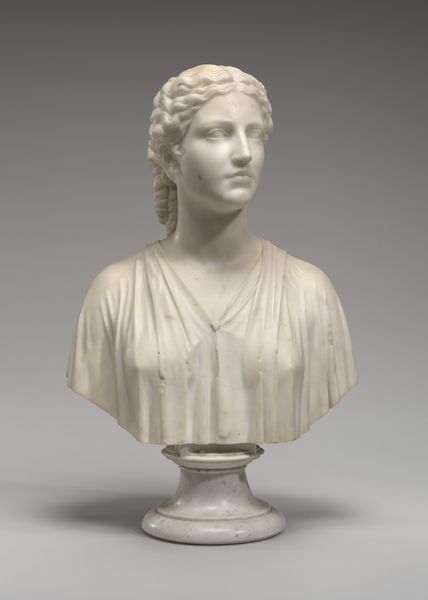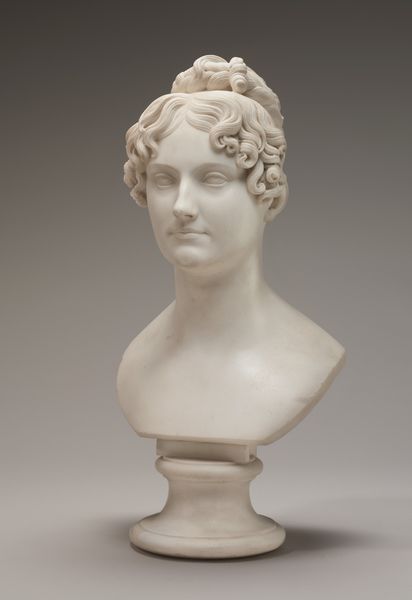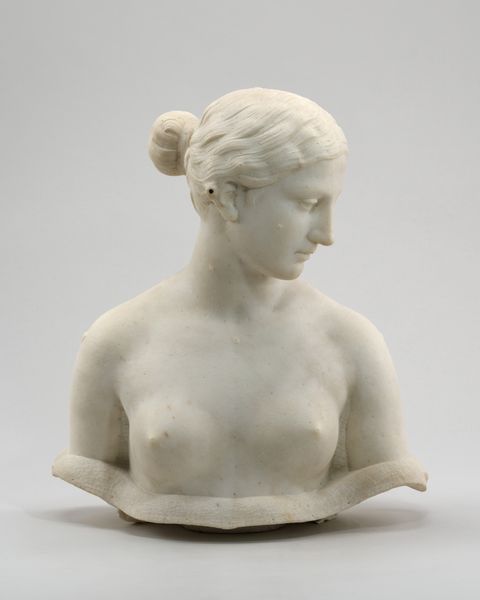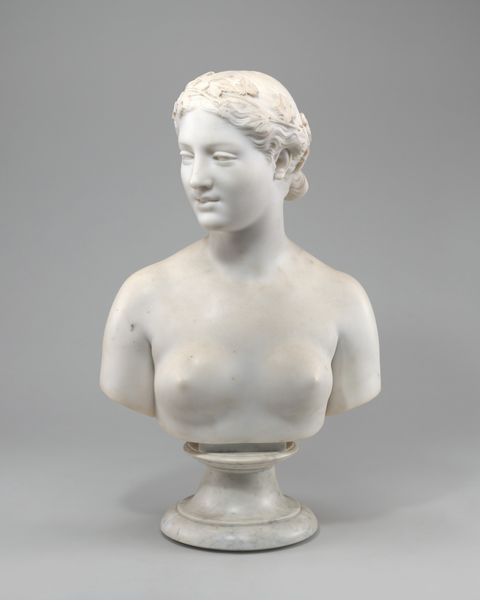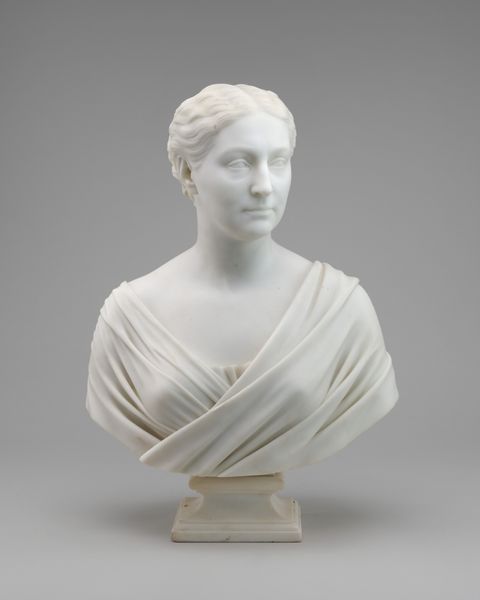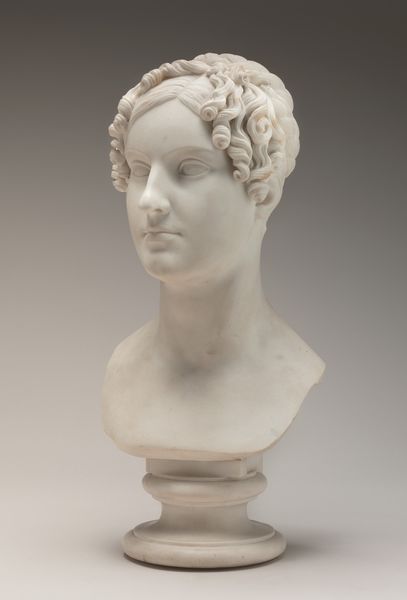
sculpture, marble
#
portrait
#
neoclacissism
#
classical-realism
#
form
#
sculpture
#
academic-art
#
marble
Dimensions: H.: 73.7 cm (29 in.)
Copyright: Public Domain
Hiram Powers carved this marble bust, called "America," sometime in the mid-19th century. Now, on first glance, marble might seem like the least radical material. Yet it's important to understand the wider context in which this piece was made. Nineteenth-century sculptors relied on Italian workshops to translate their plaster models into marble. There, skilled artisans used pointing machines to transfer measurements and employed a variety of chisels, rasps, and abrasives to achieve the desired form and finish. So, while Powers conceived the design, the physical creation was a collaborative effort, blurring the lines between artist and artisan. Furthermore, the choice of marble connects to the broader political landscape. The whiteness of the stone evokes classical ideals of beauty and democracy, associating the young American nation with the legacy of ancient Greece and Rome. But it also silently alludes to the racial politics of the time, subtly reinforcing notions of white supremacy. So, next time you encounter a marble sculpture, consider the complex interplay of material, labor, and ideology that shaped its creation.
Comments
No comments
Be the first to comment and join the conversation on the ultimate creative platform.
